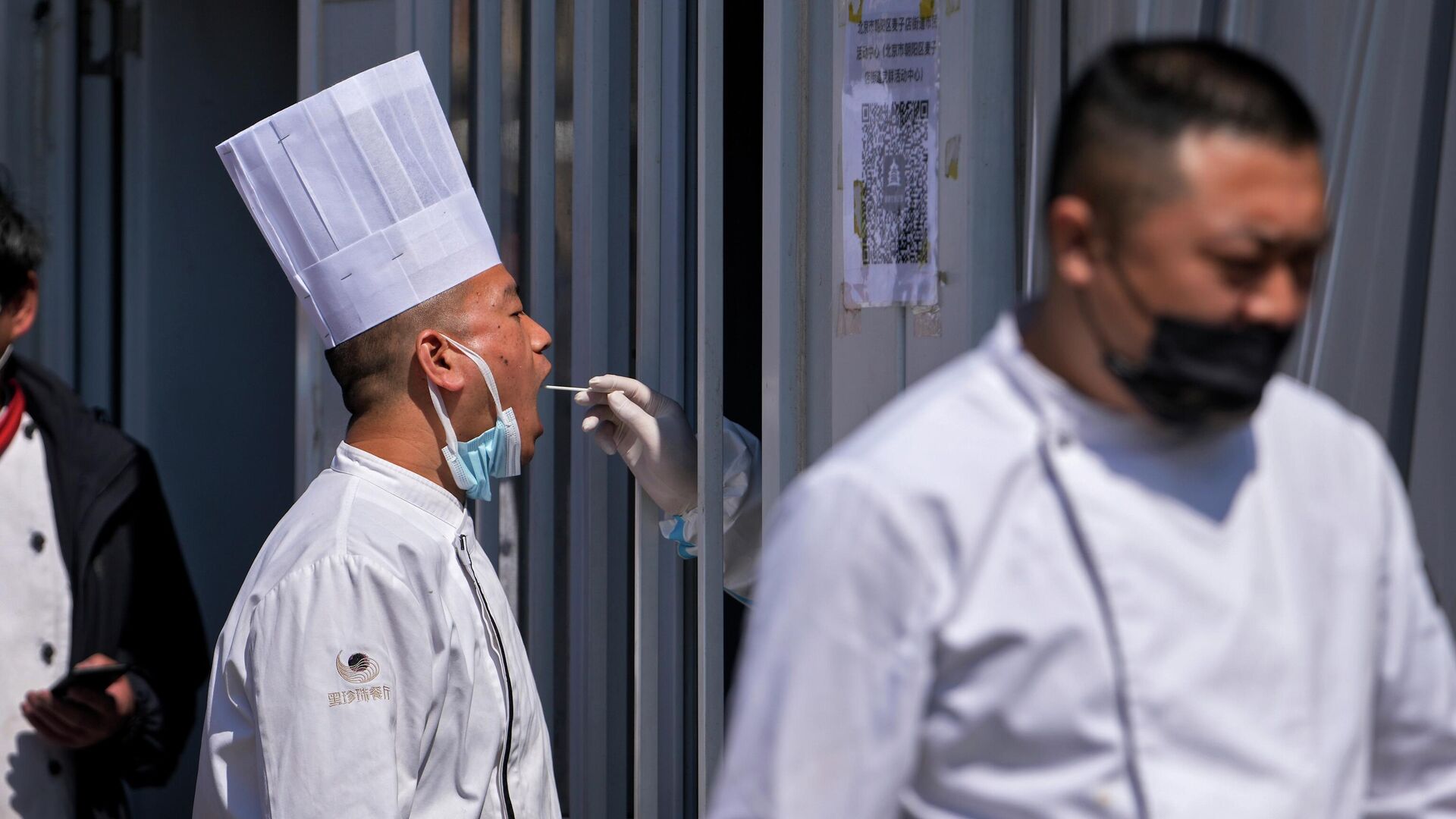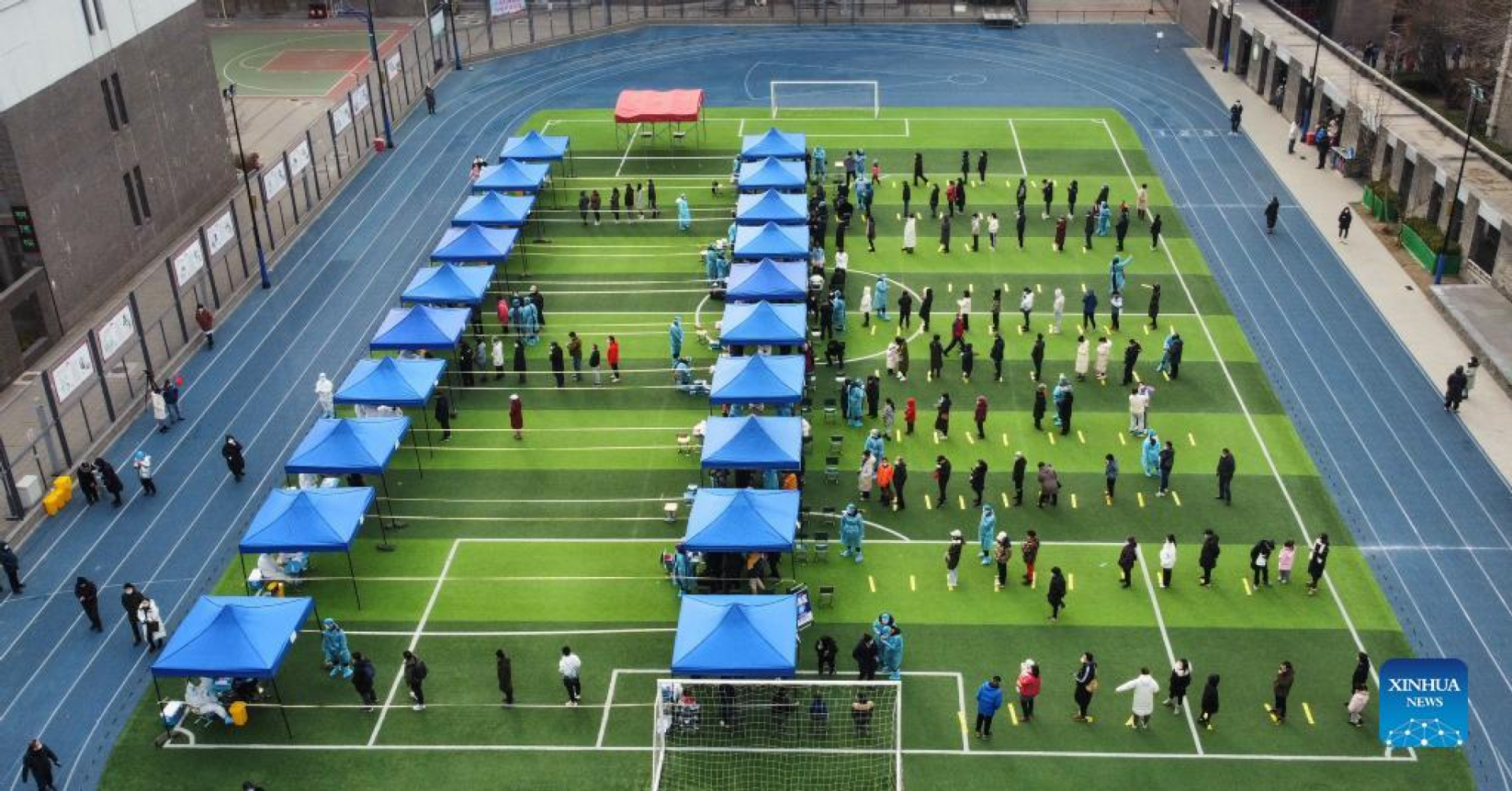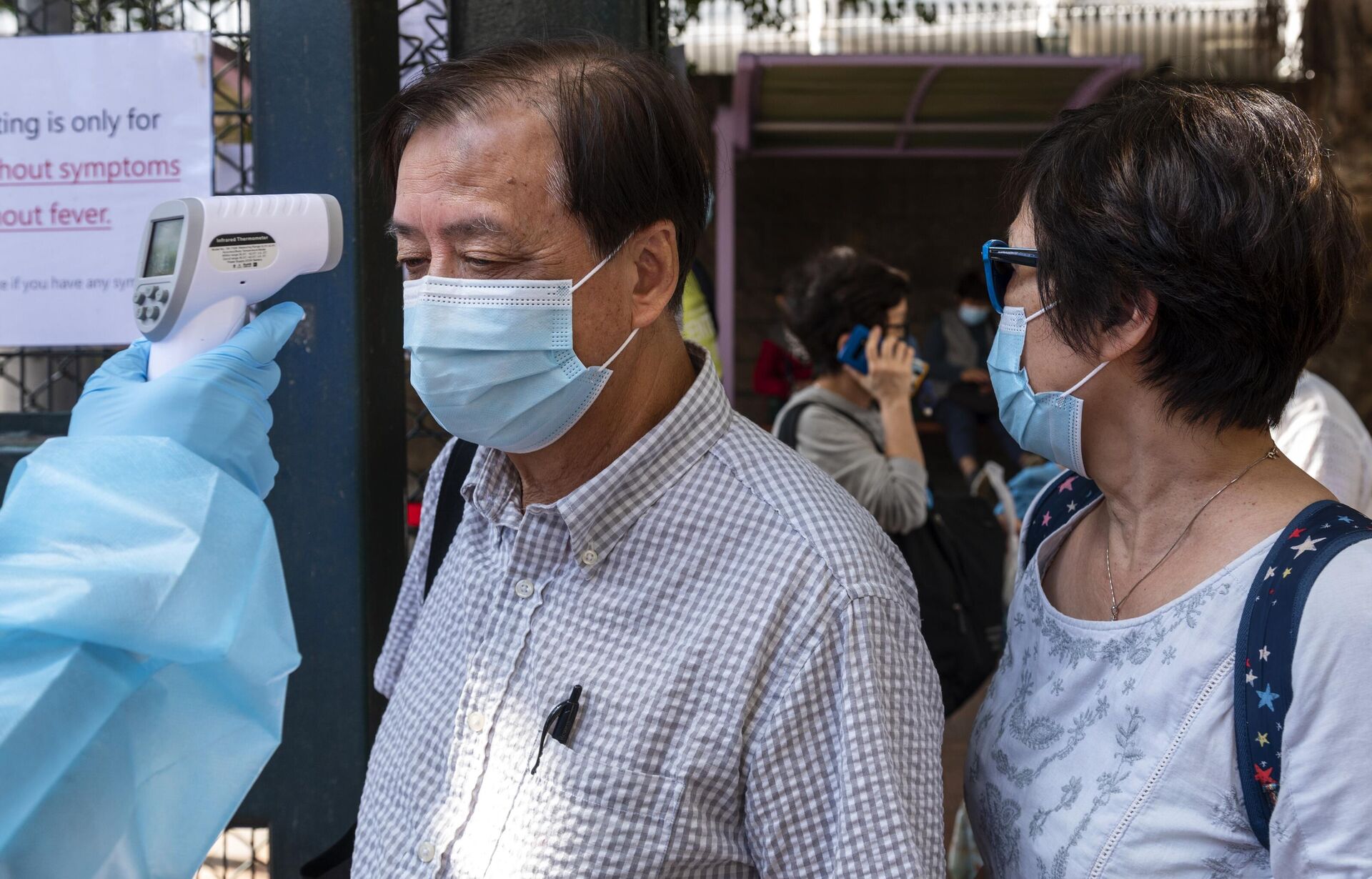Western Economic Experts Bet Against China’s ‘Zero Covid’. They Just Lost

© AP Photo / Andy Wong
Subscribe
New economic data shows that China’s policy of “Dynamic Zero Covid,” or maintaining the lockdowns-and-testing regimen long abandoned in the West as a tool for controlling COVID-19 outbreaks, was not the economic drag Western experts predicted it would be.
China’s National Bureau of Statistics said on Monday that the country’s gross domestic product increased by 3.9% in the third quarter of 2022 as compared to the previous year, China Daily reported. Moreover, in the first three quarters of 2022, China’s GDP grew by 3%.
Both are strong increases from China's second quarter numbers, which showed just 0.4% GDP growth over the previous year and a 2.5% increase for the first half of the year overall. Still, that is substantially lower than Beijing’s revised economic target of 5.5% growth for the year.
The news comes as the Communist Party of China wraps up its 20th Party Congress, in which Chinese President Xi Jinping was confirmed for a third five-year term in office. Many observers also expected the congress to serve as a bellwether for the future of Dynamic Zero Covid, which Beijing has maintained since the summer of 2021, when the Delta variant arrived in the country.
Instead, Xi hailed the “all out people’s war to stop the spread of the virus,” telling delegates that his administration had done everything it could to protect people’s health and put “the people and their lives above all else.”
Dynamic Zero Covid involves several practices that were established as successful COVID-19 control measures early in the pandemic, but which have long since been abandoned by Western nations. Social lockdowns, mass testing of entire urban populations, and funneling of food, medicine and other necessities to people in quarantine have succeeded at taming even the ultra-infectious Omicron variant of the virus.

Aerial photo taken on Jan. 9, 2022 shows a testing site for nucleic acid test in Nankai District of north China's Tianjin. North China's Tianjin, a municipality that neighbors Beijing, has decided to start a citywide nucleic acid testing after 20 people tested positive for COVID-19, authorities said Sunday.
On Sunday, China’s National Health Commission detected a total of 1,076 cases and no new deaths. It has recorded roughly 600 COVID-19 deaths in all of 2022, which is how many are dying of the virus in less than two days in the United States, according to the US Centers for Disease Control and Prevention.
However, according to numerous Western experts, this combination of suppressing COVID-19 and maintaining economic growth was not possible.
As early as January, shortly after the Omicron variant arrived in China and prompted lockdowns in several Chinese cities, the Wall Street Journal asked if Zero Covid was “starting to backfire.”
By April, British historian Niall Ferguson wrote in Bloomberg that Xi had “oversold” Zero Covid and it had become his “nemesis,” and that the virus had returned to exact “revenge on its country of origin,” floating the widely dismissed conspiracy theory that COVID-19 escaped from a Wuhan biolab in late 2019.
“The underlying reality is that, for social as well as economic reasons, Zero Covid will need to be quietly abandoned,” Ferguson argued. He then made a very explicit prediction: “Morgan Stanley’s base case is that China will not exit from Zero Covid until after the close of the 20th Party Congress in the fall. In practice, that may no longer be viable.”

A health worker checks the temperatures of visitor at the entrance of a Community Testing Centre in Hong Kong, China. After days of rapidly increase of positive COVID-19 cases, the Hong Kong government set up testing facility centers where people can be tested for COVID-19 and obtain the result within 24 hours.
© Sputnik / Miguel Сandеla
/ That same month, The Economist wrote that “China’s zero-covid strategy has become a dead-end policy” rooted in “swagger and hubris in public, an obsession with control in private, and dubious results.”
In September, the Financial Times claimed that “China’s zero-Covid policy is self-defeating” and made a similar argument to the Economist, claiming that Beijing had only refused to abandon the policy “because doing so would acknowledge its own failings.”
Earlier this month, the New York Times argued that sticking to Zero-Covid had undermined Beijing’s soft power. “The approach has left China isolated from the world and taken a grim toll on its economy,” the US paper of record said, linking to an article from April on the damage being done to the Chinese economy by the lockdowns.
In the US, authorities are expecting another winter like those seen in the first two years of the pandemic. Without almost any kind of COVID-19 protections like masking, social distancing and vaccination, to say nothing of lockdowns, there is little to stand in the way of the virus’ rapid spread. According to Western economic wisdom, such measures are incompatible with economic growth. But the US has suffered over a million dead, with hundreds more dying daily, and is facing not only a new spike in cases, but also a likely recession following a miserable economic performance so far in 2022.

